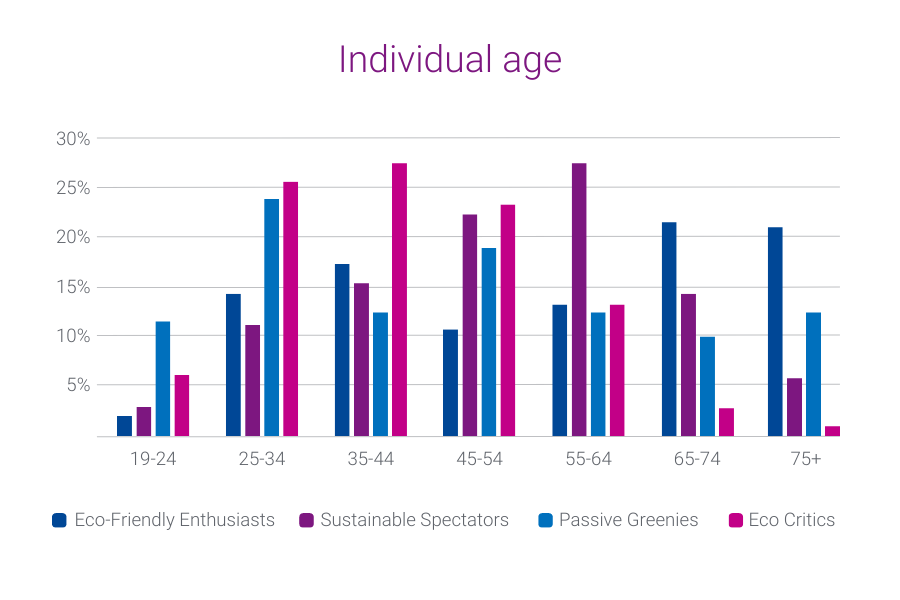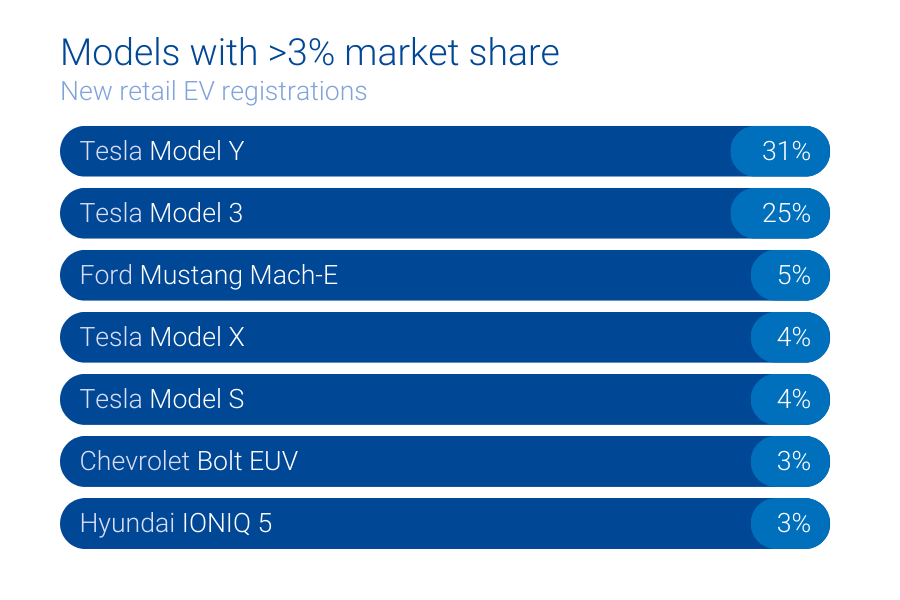As Earth Day approaches, it’s the perfect opportunity for marketers to explore innovative ways to engage with eco-conscious customers. With a strong and growing interest in sustainable business practices worldwide, green audiences are becoming increasingly influential. In addition to being good for the planet, engaging these customers is great for any brand or organization striving to become more eco-friendly and socially responsible. By taking advantage of this timely event and using appropriate tools, you can create personalized campaigns that will both promote your brand and increase customer loyalty.
Eco-conscious audiences
In this blog post, we’ll cover three eco-conscious audiences to target this Earth Day:
- Solar energy
- GreenAwareTM
- Electric vehicles
Solar energy
Our first eco-conscious audience is Solar energy. Consumers in this audience show an inclination toward harnessing the power of the sun as a clean, renewable energy source. Our audience data can provide valuable insights into the Solar energy consumer base, including their age, education level, occupation, household income, and communication preferences. Let’s explore these metrics to better understand how to reach this group effectively.
Age and living situation
Consumers in our Solar energy audience are more likely to live in a home with two or more adults and are between the ages of 45-74.

Education level and occupation
Consumers in our Solar energy audience are more likely to have graduated from college or graduate school and work in management-level occupations.

Household income
Consumers in our Solar energy audience have household incomes of more than $75,000 and their homes are valued at over $550,000.

Preferred engagement channels
Consumers in our Solar energy audience are most receptive to ads served through digital channels like digital newspapers and email.

Solar energy audience pairings
Consumers in our Solar energy audience also belong to three of our Mosaic® USA groups:
- Power Elite
- Flourishing Families
- Booming with Confidence
Our consumer segmentation portal of 126 million households and 650 lifestyle and interest attributes empowers marketers like you to precisely target your ideal audience and communicate with them on a personal level. Mosaic’s data segments the U.S. into 19 overarching groups and 71 underlying types, giving you the insights needed to anticipate the behavior, attitudes, and preferences of your most profitable customers and communicate with them on their preferred channels, with messaging that resonates.
GreenAware
Our second eco-conscious audience is GreenAware.
GreenAware segments the 126 million U.S. households within Experian Marketing Data into four distinct groups. Each group differs in their attitudes and behaviors toward purchasing products that are environmentally safe and working with companies that are eco-conscious. We created these groups using an enhanced application of traditional statistical clustering techniques based on environmentally relevant measurements in Simmons’ National Consumer Study.
Based on the distinctive mindset of consumers toward the environment, you can learn how environmental concerns fit into their lives through four major consumer segments:
- Eco-Friendly Enthusiasts
- Sustainable Spectators
- Passive Greenies
- Eco Critics
Let’s dive deeper into each group to understand their unique perspective on the environment and how this impacts their attitudes and behaviors.
Eco-Friendly Enthusiasts
This eco-conscious segment prioritizes a green lifestyle and takes pride in avoiding products that harm the planet. With traditional and liberal values, they embrace optimism and prioritize family. With their children out of the house, they take the time for some well-deserved rejuvenation and are committed to a healthy lifestyle. Some members of this group are transitioning into retirement and welcoming a new chapter in their life.
- Mature adults and retirees
- College graduate or more
- Above average income
- May be married or single
- Typically own their homes
Sustainable Spectators
This segment aspires to be more sustainable, but they struggle with translating their green ideas into action. They have a soft spot for a cozy home. While their love for interior design and taking care of their own space is evident, they’re always looking for new experiences and opportunities to learn. Staying healthy and active is a top priority for this group, so it’s no surprise that they’re always looking for ways to stay fit and feel their best.
- Established and mid-life adults
- College graduate or more
- High income
- Typically married
- Likely to own their homes
Passive Greenies
This is the largest and one of the most youthful groups. Known for their love of exploration and self-discovery, they may not have fully embraced eco-conscious behaviors yet, but they are eager to stay current with the latest technology and trends. With their incredible ability to multitask, they’re always on-the-go, and constantly seek the next best thing.
- Mainly young adults and diverse
- Education ranges from high school through some college
- Below average income
- More likely to be single or divorced
- Typically rent
Eco Critics
This group is not likely to be eco-conscious and may have negative attitudes about the environment. They are confident, driven, and focused on their personal growth. They crave instant gratification, seeking out quick and easy solutions to their everyday decisions. They place a high value on entertainment, their social life, and carefully curate their image.
- Young and established adults
- Education ranges from high school through post-graduate studies
- High income
- Married or single
- Typically own their homes
Let’s take a look at how the GreenAware segments stack up against each other in terms of age, household income, education level, and media preference. How do they compare? Let’s find out.
Age
Consumers in the Eco-Friendly Enthusiasts segment are the oldest of the four GreenAware segments – about half of the consumers are 65 or older. Eco Critics are the youngest segment, with over half of consumers in this group between ages 25-44.

Household income
Sustainable Spectators and Eco Critics are the wealthiest GreenAware segments. The average household income of consumers in these segments is above $100,000. Passive Greenies have the lowest household income, with a majority below $50,000.

Education level and occupation
Passive Greenies are more likely to work Blue Collar jobs and have the lowest level of education. As the wealthiest segments, Sustainable Spectators and Eco Critics have the highest levels of college degrees and work in management, business, and financial operations. Eco-Friendly Enthusiasts are the most likely to be retired and out of the workforce.

Preferred engagement channels
- Streaming TV is the preferred engagement channel for all GreenAware segments.
- Eco-Friendly Enthusiasts prefer digital channels like digital newspapers, mobile SMS, and email. They also engage with traditional channels like direct mail and newspaper.
- Passive Greenies have a high preference for digital display, mobile SMS, digital video, broadcast cable TV, and radio.
- Eco Critics have a high preference for digital channels like digital newspapers, mobile SMS, and digital display.
- Sustainable Spectators strongly prefer digital newspapers. They don’t show as strong of a preference for mobile SMS and digital display as Eco Critics and Passive Greenies.

GreenAware audience pairings
Six of our Mosaic groups have at least one GreenAware segment with 10% or more of the population. For more precise targeting, below are suggested Mosaic audiences you can pair with each GreenAware segment:
| Eco-Friendly Enthusiasts | Sustainable Spectators | Passive Greenies | Eco Critics |
| Booming with Confidence | Power Elite | Singles and Starters | Power Elite |
| Autumn Years | Booming with Confidence | Golden Year Guardians | Suburban Style |
| Golden Year Guardians | Singles and Starters |
Electric vehicles
Our third eco-conscious audience is electric vehicles.
Electric vehicles (EVs) are having a major moment in the automotive industry. This is no surprise given that new EV models are being released and an increasing number of charging stations are popping up around the country. As EVs become more prominent, it’s essential to stay up to date on relevant trends to make informed decisions about what lies ahead.
The demand for electric vehicles (EVs) is on the rise
Consumers are embracing the EV revolution, showing their desire for a cleaner, greener future. Automotive marketers are increasingly looking to reach in-market EV shoppers and current alternative fuel vehicle owners due to the growing availability of electric vehicles, improved infrastructure, and rising popularity. In 2022, EVs charged up the market and accounted for a remarkable 6% of new retail registrations.
While Tesla continues to dominate the EV market, Ford, Chevrolet, and Hyundai are starting to compete, each holding more than 3% of the market share of new retail EV registrations.

Geography
Where are we seeing the most new retail EV registrations? The top designated market areas (DMAs) for new retail EV registrations are mostly located in heavily populated, coastal cities like Los Angeles, CA and New York, NY.

The fastest growing DMAs, however, are in smaller cities like Tucson, AZ and Oklahoma City, OK.
Generational demographics
Gen X and Millennials make up the largest percentage of new retail EV buyers at 37.5% and 34.4%. Gen Z and the Silent generation represent the smallest shares at 5% and 2.1%. Boomers hover between Gen X and Millennials’ share and account for 20.6% of new EV retail purchases.
EV audience pairings
Our top five Mosaic groups for new EV buyers include:
- American Royalty
- Cosmopolitan Achievers
- Philanthropic Sophisticates
- Couples with Clout
- Fast Track Couples
How to target consumers in-market for electric vehicles
We offer 70+ audiences that are focused on likely buyers and owners of EV and plug-in hybrid (PHEV) vehicles. We also offer a subset of 28 audiences focused on individual EV/PHEV vehicle models.
Below is how you can find a few of these audiences on-the-shelf of most trusted advertising platforms:
- Autos, Cars, and Trucks > In Market-Fuel Type > Electric
- Autos, Cars, and Trucks > In Market-Fuel Type > Used Electric
- Autos, Cars, and Trucks > In-Market Make and Models > Tesla
- Autos, Cars, and Trucks > In-Market Make and Models > Chevrolet Bolt EV
We can help you reach eco-conscious consumers
Earth Day is a great opportunity to get creative with your marketing efforts with our three eco-conscious audiences: Solar energy, GreenAware, and electric vehicles. To find out how you can add eco-conscious audiences to your marketing plan, contact us.
Get in touch
Latest posts

Originally appeared in AdExchanger Google’s decision not to deprecate cookies in the Chrome browser after all caused a stir across the industry. Companies invested heavily in developing solutions aligned with the Privacy Sandbox as a survival tactic for the post-cookie landscape. At first glance, Google’s about-face may appear to undercut those efforts. It’s easy, and perhaps even satisfying for some – but inaccurate – to say “all that effort was for nothing.” Given Chrome’s dominance among browsers, AdTech companies had no choice but to prepare for “what if” scenarios. The same goes for cookie deprecation. Google’s plan to end support for third-party cookies would have removed a mechanism that has been a cornerstone of addressability for the past 15 years. To be clear, those efforts have not been wasted. They spurred innovation across the AdTech landscape, driving progress in privacy-first targeting, alternative identifiers, supply-path data activation, and real-time data enrichment – all of which will pay dividends for years to come. Whether born directly from Privacy Sandbox participation or inspired by the broader trend toward privacy reform, industry-wide preparation for cookie loss and browser disruption has yielded tangible benefits. Pressure from Google, Apple, and evolving regulations served as a catalyst for modernization that could shape the next decade of advertising technology. An industry anchored in product innovation AdTech is a fundamentally product-driven industry defined by short innovation cycles and the imperative to build and test rapidly. This DNA enables companies to stay resilient, evolve and deliver innovation. Change is good. Disruption can be even better – but only for those who embrace it. Google’s evolving stance on cookies and Privacy Sandbox doesn’t negate what’s been learned. If anything, it underscores the need to keep innovating. The next wave of disruption is likely right around the corner. The payoff While some may argue that the time and effort spent preparing for cookie loss was wasted, those efforts have functioned as a forcing mechanism for several innovations in data activation. Supply-side data activation and optimization, aka “curation,” is an alternative to the traditional approach to data activation. Unlike the traditional data management platform (DMP) to demand-side platform (DSP) activation flow, curation allows buyers to utilize supply-path data more directly. The upshot? Improved performance and pricing for media agencies and brand advertisers. As curation continues to evolve, it’s poised to play a central role in how advertisers and publishers transact. Real-time data enrichment is another area that has benefited from this period of accelerated innovation. Many companies were compelled to improve their tech stacks to align with Sandbox protocols. These updates, particularly in real-time data enrichment capabilities, are now laying the groundwork for future data activation strategies across both the buy and sell-sides. Exiting out of tunnel vision Over the past five years, the AdTech industry has invested deeply in planning for a future without cookies. Still those investments have been well worth it. While cookies are not going away, the broader deprecation of signal continues. The work that was done to prepare will inevitably inform the next evolution of our industry. Contact us Latest posts

Marketers are under more pressure than ever to deliver personalized, high-performing campaigns—while navigating tighter budgets, shifting privacy expectations, and fragmented tech stacks. Despite an explosion of tools and data sources, the fundamentals of marketing haven’t changed. Every great campaign still starts with a simple question: Who are we trying to reach? The answer depends on how well you understand your customers. Increasingly, that understanding is hampered by data silos, inconsistent identity signals, and disconnected workflows between planning, activation, and measurement. When those pieces don’t align, it leads to inefficient spending, incomplete insights, and missed opportunities. To move forward, marketers need more than better tools—they need a more connected approach. Start with a complete view of the customer The foundation of effective marketing is understanding your audience—not just who they are, but what they care about and how to reach them across devices and platforms. That starts with building a complete customer profile. For many marketers, this means linking persistent offline data—such as name and address—with fresh digital signals like device IDs and online behaviors. When combined, these elements provide a high-fidelity view of the customer that can be enriched with attributes like demographics, purchase behavior, and lifestyle interests. This kind of profile doesn’t just help you understand people—it helps you build audience segments that actually perform. Whether you’re working with your own CRM data or third-party sources, the ability to create addressable segments that are both accurate and scalable is what separates good campaigns from great ones. 🛳️ That’s exactly what MMGY did for Windstar Cruises. By layering first-party data with behavioral and demographic insights, they built custom audiences that more than doubled campaign benchmarks. 🎮 Gaming platform Unity tapped into Experian audiences to understand player behaviors across web, mobile, and connected TV (CTV). These insights helped their advertisers reach gaming audiences more effectively—tailoring creative and delivery to real-world preferences, not assumptions. Activate with precision, not just volume Knowing your audience is only half the battle. The next challenge is reaching them—consistently and efficiently—across multiple channels. This is where fragmentation can creep back in. All too often, marketers build audiences in one system, but activate in another, causing data loss and targeting mismatches. A more connected strategy uses the same identity and audience spine across planning and activation, reducing signal loss and improving accuracy. 👉 Curated private marketplaces (PMPs), for example, allow marketers to match high-quality audiences with premium inventory in a targeted, transparent, and efficient way. These deals let marketers align their spending with their goals—whether that’s lowering cost-per-acquisition or boosting reach in a key vertical. Performance results are bearing this out: PMG By using Audigent’s curated PMP approach in combination with Experian audience data, they delivered campaigns that were 44% more cost-efficient across CTV. Boiron For Boiron, a homeopathic brand, using curated media buying reduced data costs by 30% and beat CPA goals for both video and display by more than 40%. Index Exchange Publishers benefit, too. When Index Exchange included Audigent-curated inventory in their PMPs, they saw an average 70% revenue lift for mobile and a 13% lift for CTV. When identity, audience, and inventory are aligned, everyone benefits—marketers, publishers, and consumers. Measure what matters Too often, measurement is treated as an afterthought. But in a connected campaign, it’s built in from the beginning. By using consistent identity across planning, activation, and measurement, marketers can connect ad exposure to real-world outcomes—whether that’s an online conversion, an in-store visit, or a new customer relationship. This kind of closed-loop measurement turns marketing into a learning engine. You don’t just see what happened—you understand why it happened and can use that information to improve the next campaign. 🛳️ In the case of Windstar Cruises, MMGY used Experian identity to precisely measure how digital ad exposures translated into bookings. That kind of visibility gives marketers more than a report card. It gives them the feedback they need to optimize smarter next time—and prove ROI every time. The future is connected To meet today’s demands, marketers need a new way of working—one that starts with a complete understanding of the customer, builds addressable audiences on a strong identity foundation, activates them precisely across channels, and measures impact in real time. The marketers embracing this approach are already seeing results: stronger performance, more efficient spending, and deeper insights that power what comes next. The future won’t be built on more tools—it will be built on more connection. Connect with us Latest posts

Curation — the intelligent packaging of data and inventory actionable in a private marketplace deal — can no longer be considered a trend or buzzword. With over 66% of all open exchange – representing $100 billion in annual spend – being transacted through private marketplace deals (PMPs), curation is a key part of how data and identity are addressed and actioned in programmatic media. Programmatic advertising is certainly known for big shifts, but as shared by Index Exchange CEO Andrew Casale, “Curation will be bigger than header bidding and as big as programmatic or real-time bidding (RTB) – that’s our bet.” And we agree. But why has curation become a critical component of brands and media agencies' digital advertising strategies? Put simply, the math. Case study after case study empirically shows curation performs well for both the buy and sell-sides. For media agencies and brands, curation consistently shows four main benefits: Significant cost efficiencies Buying curated PMPs shows significant cost efficiencies when compared to buying data from the buy-side alone. Strong performance Data-enriched, curated PMPs can be optimized through the supply path, unlike a data management platform (DMP) segment, which leads to strong performance. Futureproofs media buying When data is curated through the supply path, it does not need to rely on legacy identifiers (like cookies), and the door is open to robust, next-gen addressability which better futureproofs media buying opportunities. Value-added insights Curation comes with robust log-level data that can be used for value-added data science including analytics, insights, reporting, and attribution – all critical in a world where addressability and identity resolution are becoming even more challenging. Curation introduced efficiency into homeopathic brand Boiron’s media buys, reducing the brand’s data costs by 30%, which enabled the brand to reinvest the same budget in brand awareness goals. Curation not only met but also exceeded the CPA for display by 82% and for video by 41%. “Audigent has been a top 5 performer in terms of CPA during our testing, helping our teams deliver 44% more efficient spend for brands across CTV campaigns."Sam Bloom, Head of Partnerships at agency PMG A big boost for addressability Legacy identity signals are changing. Whether it’s by browser, device, or platform, both buy-side and sell-side platforms need strong identity signals to reach their intended audiences, and this has become harder than ever before. Curation, with its real-time data connection and enrichment capabilities, solves signal loss challenges by directly connecting to the supply path and using a broader spectrum of identity solutions to boost addressability. Curation allows platforms to target first-party, third-party, contextual, indexed and modeled audiences. This alleviates the dependence on any one identifier and boosts the relevant bidding opportunities for brands and media agencies to target audiences. Not all curation is created equally As with any hot innovation, AdTech is notorious for companies jumping on the bandwagon of the largest trends. Curation is no different, with seemingly everyone now claiming to be a “curator.” As the industry works to define what is and isn’t “curation," we are uniquely positioned to define this as Audigent has pioneered curation for seven years and is the industry leader. The definition of curation is the intelligent packaging and optimization of data curated against the inventory supply path. There are three definitional elements to any curation product: Unique audience data Curation must include first-party, third-party, contextual, indexed and/or modeled data. Robust SSP integration To apply data in real-time to the inventory supply path, a curator must have deep partnerships and integrations that enable the combination of data and inventory into a single package. Optimization The whole point of curating data against the supply path is that it opens the door for robust real-time optimization to drive performance. If the solution ticks all three boxes, then brands and agencies should test curation and gauge its results firsthand. Curation done right drives results for brands, agencies, and publishers When done well, curation improves media buying efficiency and performance for brands and agencies. Importantly, it also drives results for publishers and content creators. Advertisers realize average data segment savings of 36-81% when using PMPs over the open exchange (Internal data) Advertisers see 10-70% lower CPC, 1.5x-3.0x higher CTR, and 10-30% higher video completion rate when using data-enriched PMPs over the open exchange (Internal data) When including their inventory in curated PMPs, publishers see an average 70% revenue uplift for mobile and 13% for connected TV (CTV) Beyond voting with budgets, media agencies and brands are also weighing in on the curation conversation: “Our Conditions Marketplace strategies have driven a 48% improvement in eCPM and a 26% improvement in CPA across our pharma client portfolio as of May 2024. For one client, we saw ROAS improve by 58% compared to their overall omnichannel performance while maintaining quality. These results aren’t outliers—they’re proof that curation is no longer a nice-to-have; it’s a must-have for marketers who want performance, precision, and scale working in lockstep.”Amanda DeVito, Butler/Till Industry-leading curation with Experian Tapping into an end-to-end solution that enables marketers to understand and reach their desired customers across channels through curation is a win-win for all parties. In the past three years, Experian and curation company Audigent have delivered a range of industry-leading innovations together, including the integration of Experian data into Audigent’s PMPs. As one company now, Experian's unique identity and data capabilities amplify how curation activates on the buy-side at scale, setting a new standard for audience targeting with added benefits like audience customization and flexible activation through Audigent’s PMPs or demand-side platforms. Connect with us Latest posts